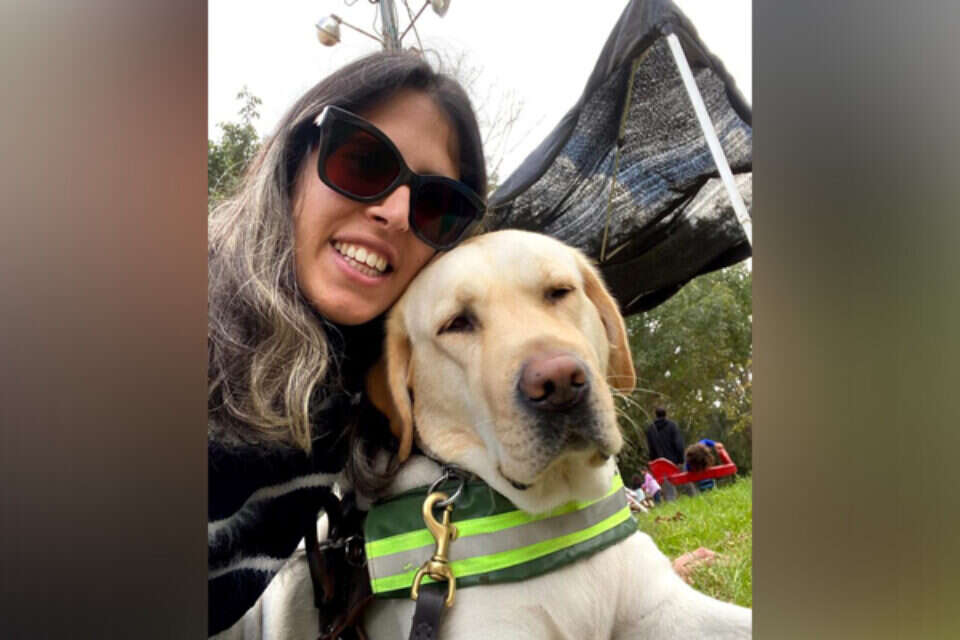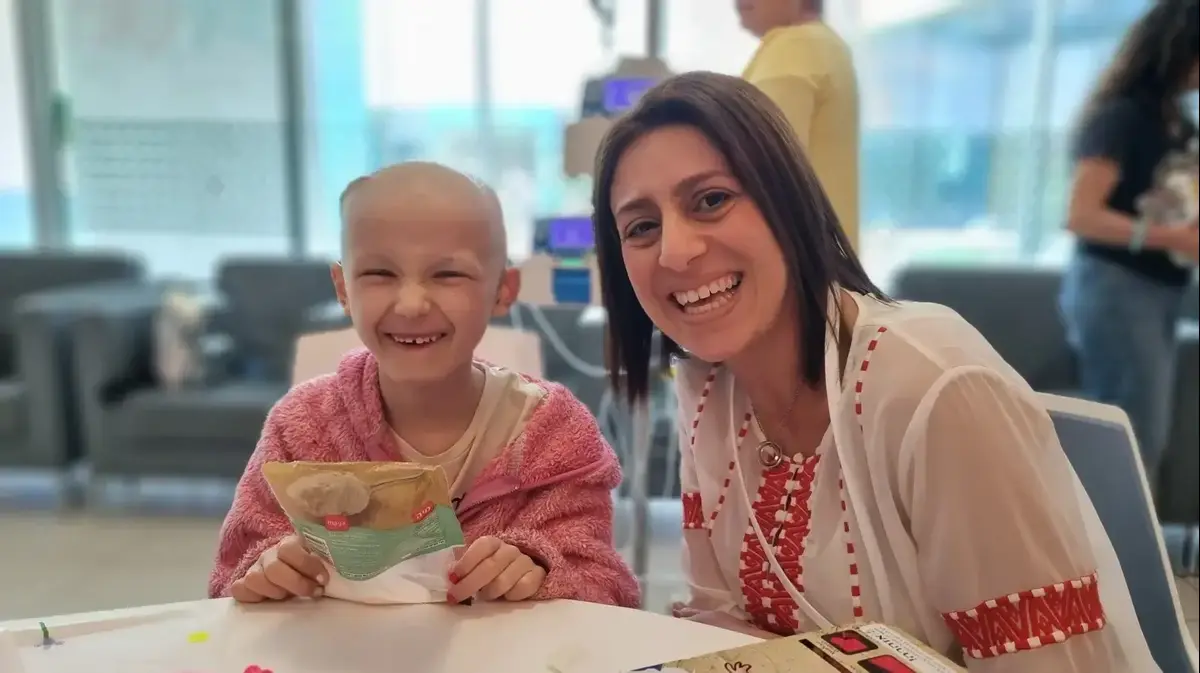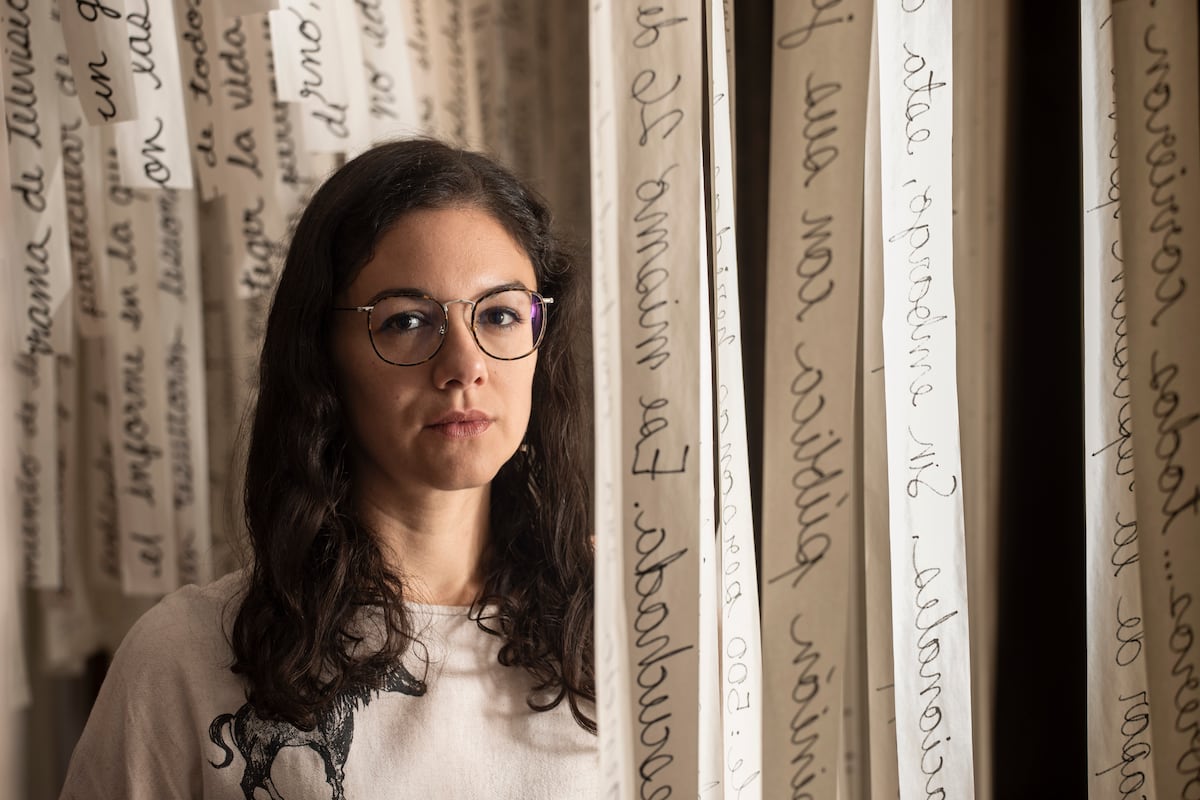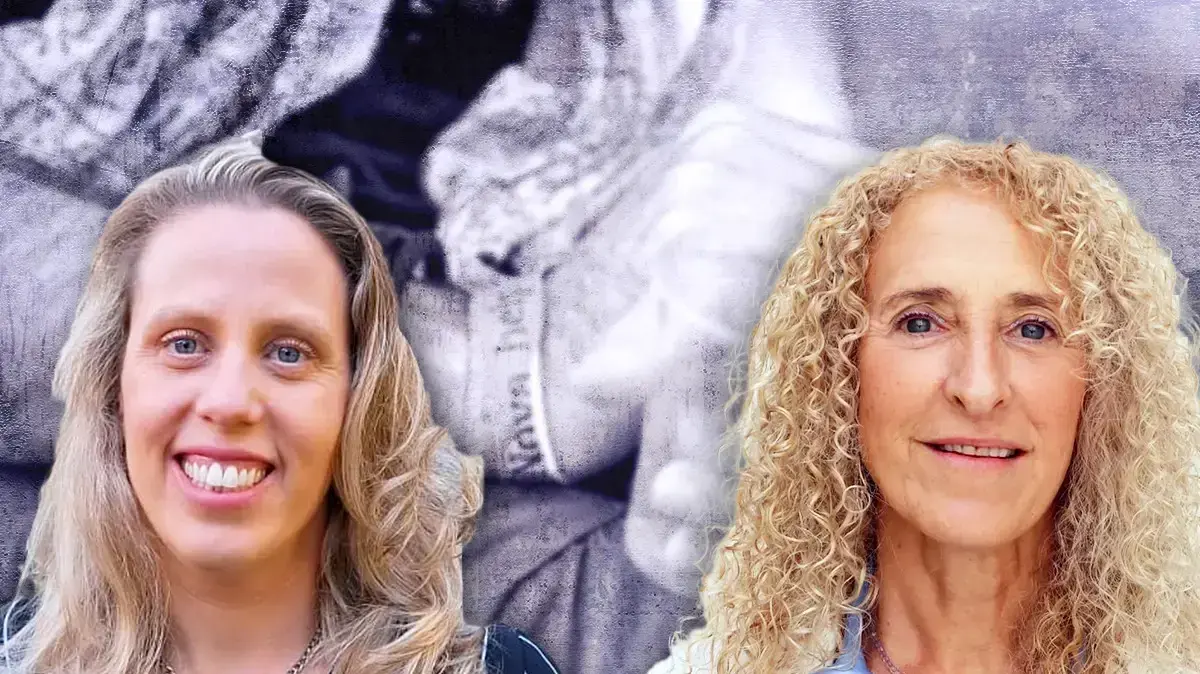It may sound surprising, but a blind person with a guide dog will often walk faster than a sighted person. "In training, I find myself increasing the pace of walking in order to catch up with them," says Yoni Lankri of Guiding Eyes for the Blind, director of training at Guiding Eyes for the Blind, one of the only nonprofits in Israel that breeds and trains guide dogs. "Don't forget that the blind are exempt from all the distractions that sighted people are exposed to."
On the occasion of Blind Day, the Day of Identification with the Blind and Visually Impaired that took place today (Tuesday), we spoke with Lankri, and heard from him about the benefits of guide dogs, how they are trained, and how a colorblind dog recognizes when the traffic light changes.
Long queue
There are more than 20,40 recognized blind men and women in Israel, including many disabled IDF soldiers, but it is estimated that the number is double and reaches about <>,<> people. In Israel, as in Israel, the demand for guide dogs far exceeds the supply, and a long line of blind people is waiting to receive a dog to help them with their daily activities.
Yoni Lankri and Ella Matek from the "Guiding Eyes for the Blind" association, with guide dogs, photo: Uriah Lankri
"A guide dog exempts blind people from counting steps and asking people for help," Lankri explains. "In fact, it develops their independence and raises their self-worth and doesn't feel needy or limited, which I think is the most important thing."
In his opinion, the biggest problem of blind people is mobility and spatial orientation. "Walking with the cane is cumbersome and slower and in which the blind person can rely only on himself, while walking with a guide dog, half the responsibility lies with the dog," he notes. "Thus, their orientation in space with a guide dog becomes simpler, faster and more independent. It allows the blind person to invest much of his concentration in other things besides walking safely."
Teamwork
The organization runs a training center near Kibbutz Zivon in the Upper Galilee, where guide dogs are trained and trained for about eight months, after spending a year and a half in foster care. The training center was founded in 1989, and over the years has provided guide dogs to hundreds of blind people.
The organization not only looks for a foster home for the puppies and trains them for their role, but also pays attention to the compatibility between a guide dog and the blind and the environment in which it will have its closest companion and friend.
A question of faith. Guide dogs // Photo: Uriah Lankri
"The blind come to school for a 28-day course in boarding school conditions. As part of the course, the right dog is matched for the blind, and then for 28 days they are taught techniques and tools, and given the responsibility to perform them," Lankri explains. "The course is done in the dog's natural area, which knows the routes, which allows us to focus on the blind person and instruct him how to give the instructions to the dog and carry out the techniques. It's important to understand that this is teamwork – 50% of the responsibility belongs to the blind person and the remaining 50% is to the dog's work, and thus you get 100% guidance that is faster, better and more reliable."
And how does this whole process happen? Lankri says that training techniques are based on positive reinforcement for the dog: "We train them using a track with poles and tell the dog, for example, that the second pillar is stop 42 (for example, when the blind person wants to take the bus). When the dog arrives at Station 42, we will pet him. These are dogs whose desire to give and want is high. We will repeat this several times, until the dog learns that the second pillar is Station 42. As far as the dog is concerned, it's just a sound, but he knows that when he arrives at this station, he gets petted, so that the third and fourth time it will 'lock' in his memory, and therefore he will do it every time."
He added: "When the blind person returns home and feels comfortable in his environment, he continues to teach the dog more and more 'stops' in this way, for example the pharmacy, the children's school or even shops in the mall. Of course, a close and natural relationship is created between the blind man and his dog, and the instructions and their execution become a natural and routine part of life."
One of the main dangers to dogs is on the road, so how do we let the dog know that the traffic light is changing? How can you prevent them from distractions, like running after a in heat or a cat?
"The dogs are colorblind, so they cannot recognize when the traffic light changes. This is also where teamwork comes into play, when the blind person decides when to cross the road, but the dog is trained to avoid danger, in this case a moving vehicle. When the dog recognizes such a danger from a distance, it will know how to stop, retreat or walk faster. As for distractions, we train dogs to be work-focused, so they know to be careful and not follow distractions of any kind, whether it's a child who wants to play with him, a person holding food or someone calling him."
"A natural and routine part of life." Lankri guiding the blind in the association // Photo: Public Relations
Which dogs are suitable to be guide dogs and why?
"Labrador dogs, German Shepherds and poodles are best suited, although Labradors are now focused. Statistically, their success rates are the highest, which is not surprising, because of their character traits. They are breeds of calm character, the right size, sociable, non-aggressive towards humans and other animals. They are highly enterprising, meaning that their thought process and data processing cause them to cross-check with their system of stimuli, making it easier to teach them such steps – and easier for them to absorb the content."
According to Lankri, although guide dogs work with dogs, they need to be taken care of with emotional and physical load, and of course also the highest quality food adapted to them. "We are strict about this in our kennel," he says. "With the quality living conditions and as a charity supported primarily by donations, we are always happy to receive donations of dog food from Royal Canin, the manufacturer of the premium dog nutrition brand that offers food tailored to your dog's breed, age and lifestyle."
Four-legged success story
One of these success stories is that of Nofar Shafir and the dog Baylis. Nofar is a mother of three daughters who, on her 28th birthday, suffered a head injury from soccer – and within four hours lost her sight. She used a cane until one day she went down the road with her baby daughter and young daughter without knowing she had reached the road. She went into shock, and didn't leave the house for about three years, until Bayliss came into her life — and changed it. Bayliss goes everywhere with her, takes care of her and her three daughters, and is like the fourth daughter in the family.
Nofar Shafir and her daughter alongside a guide dog Baylis // Photo: Courtesy of the subject
Today, after three years of accompanying Nofar, the dog can testify that Baylis takes care of her and her daughters in everything. Sometimes, when the girl disappears in the supermarket while shopping, Bayliss knows how to lead Nofar to her. Another example of this is when Nofar did not feel well. When that happens, she doesn't move from her bed until she recovers. Bayliss also warns her of dangers, one of the most recent cases of this being when Shafir walked where construction work was being carried out without fencing, until Bayliss prevented her from continuing because she made sure she did not enter the area with exposed irons and potholes.
Despite the great help she receives from Bayliss, Shafir says that there are still places where she is not allowed to let the dog in, even though the law is on her side and allows blind people to enter any place or institution with a guide dog, for example when she recently wanted to visit a relative who was hospitalized. When she was prevented from entering the hospital with him, she had to call a police officer to let her into the hospital ward with Bayliss.
"For us, every day is the day of the blind," Lankri concludes. "For the public, this is an important day to raise awareness of the difficulties of the blind, but also of the special bond that has been forged between dogs and the blind."
Wrong? We'll fix it! If you find a mistake in the article, please share with us











/cloudfront-eu-central-1.images.arcpublishing.com/prisa/KMEYMJKESBAZBE4MRBAM4TGHIQ.jpg)


/cloudfront-eu-central-1.images.arcpublishing.com/prisa/EXJQILQR5QI7OMVRTERD7AEZAU.jpg)
